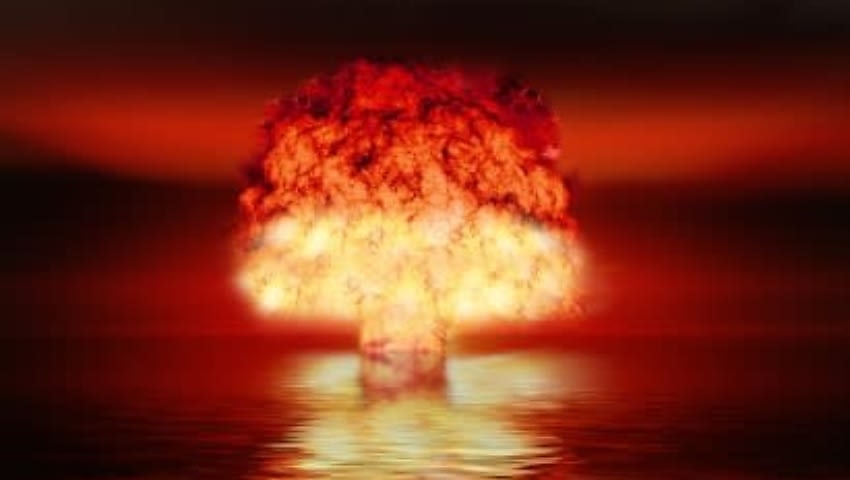What is the probability of nuclear war in the rapidly deteriorating geostrategic environment?
To continue reading the rest of this article, please log in.
Create free account to get unlimited news articles and more!
The ongoing Russia-Ukraine war and the great power conflict between the United States and China continue to threaten global peace and stability.
Throw nuclear weapons into the equation and the future looks bleak, with three of the aforementioned nations armed with devastating long-range strike capability.
In May, Defence Connect published the insights of Peter Brookes, senior research fellow at The Heritage Foundation, who warned nuclear sabre-rattling has “reached a deeply unsettling din”.
“The world is an increasingly dangerous place, only made more menacing by the proliferation of nuclear technology and nuclear weapons, and dangerous threats involving their use by desperate, dictatorial regimes,” Brookes wrote.
Joseph Nye, Jr, a professor at Harvard University and a former US assistant secretary of defence, explores whether a nuclear confrontation is inevitable. Nye reflects on decades of conjecture from analysts and observers, including novelist CP Snow, who had claimed in the 1960s nuclear war within a decade was “a mathematical certainty”.
“That may have been an exaggeration, but many believed Snow’s prediction would be justified if a war occurred within a century,” Nye writes in a piece originally published by Project Syndicate.
“…Those advocating the abolition of nuclear weapons often note that if you flip a coin once, the chance of getting heads is 50 per cent; but if you flip it 10 times, the chance of getting heads at least once rises to 99.9 per cent.
“A 1 per cent chance of nuclear war in the next 40 years becomes 99 per cent after 8,000 years.”
But Nye rejects this assertion, arguing the coin-flip metaphor “assumes independent probabilities” and instead comparing human interactions to “loaded dice”.
“What happens on one flip can change the odds on the next flip. There was a lower probability of nuclear war in 1963, just after the Cuban missile crisis, precisely because there had been a higher probability in 1962,” he continues.
“The simple form of the law of averages doesn’t necessarily apply to complex human interactions. In principle, the right human choices can reduce probabilities.”
Rather, Nye contends that the likelihood of nuclear war “rests on both independent and interdependent probabilities”, adding a “purely accidental war” is rare and would be “limited”.
“Moreover, if an accidental conflict remains limited, it may trigger future actions that further limit the probability of a larger war,” he continues.
“And the longer the period, the greater the chance that things may have changed. In 8,000 years, humans may have much more pressing concerns than nuclear war.”
Nye goes on to note proponents of the “mathematical inevitability” argument often advocated for unilateral nuclear disarmament.
But this course of action, Nye claims, would instead heighten the risks of war.
“…Nuclear knowledge cannot be abolished, and coordinating abolition among nine or more ideologically diverse nuclear-weapon states would be extremely difficult, to say the least,” he writes.
“Unreciprocated unilateral steps could embolden aggressors, increasing the odds of an unhappy endgame.
“We have no idea what utility and risk acceptance will mean to distant future generations, or what people will value in 8,000 years.”
The moral obligation to future generations, Nye adds, does not necessarily require the “complete absence of risk”.
“We owe future generations roughly equal access to important values, and that includes equal chances of survival,” he writes.
“That’s different from trying to aggregate the interests of centuries of unknown people into some unknowable sum in the present. Risk will always be an unavoidable component of human life.
“Nuclear deterrence is based on a usability paradox. If the weapons are totally unusable, they don’t deter. But if they are too usable, nuclear war with all its devastation might occur.”
According to Nye, nuclear deterrence “is not all right or all wrong” but instead “must be conditional”.
He continues: “The just war tradition that we have inherited over the centuries suggests three relevant conditions that must be met — a just and proportionate cause, limits on means, and prudent consideration of all consequences.”
Nye outlines five maxims derived from the conditions of a just nuclear war:
- Understanding self-defence is a just but limited cause;
- Never treating nuclear weapons as normal weapons;
- Minimising harm to innocent people;
- Reducing the risks of nuclear war in the near term; and
- Endeavouring to reduce reliance on nuclear weapons over time.
Nye concludes by reflecting on the lessons of the war in Ukraine, which he says demonstrates “there is no way to avoid uncertainty and risk”.
“The goal of reducing (not abolishing) the role of nuclear weapons over time remains as important as ever,” he writes.
“Richard Garwin, the designer of the first hydrogen bomb, calculated that, ‘If the probability of nuclear war this year is 1 per cent, and if each year we manage to reduce it to only 80 per cent of what it was the previous year, then the cumulative probability of nuclear war for all time will be 5 per cent.’
“We can live moral lives with that probability.”
Get involved with the discussion and let us know your thoughts on Australia’s future role and position in the Indo-Pacific region and what you would like to see from Australia's political leaders in terms of partisan and bipartisan agenda setting in the comments section below, or get in touch with

 Login
Login







